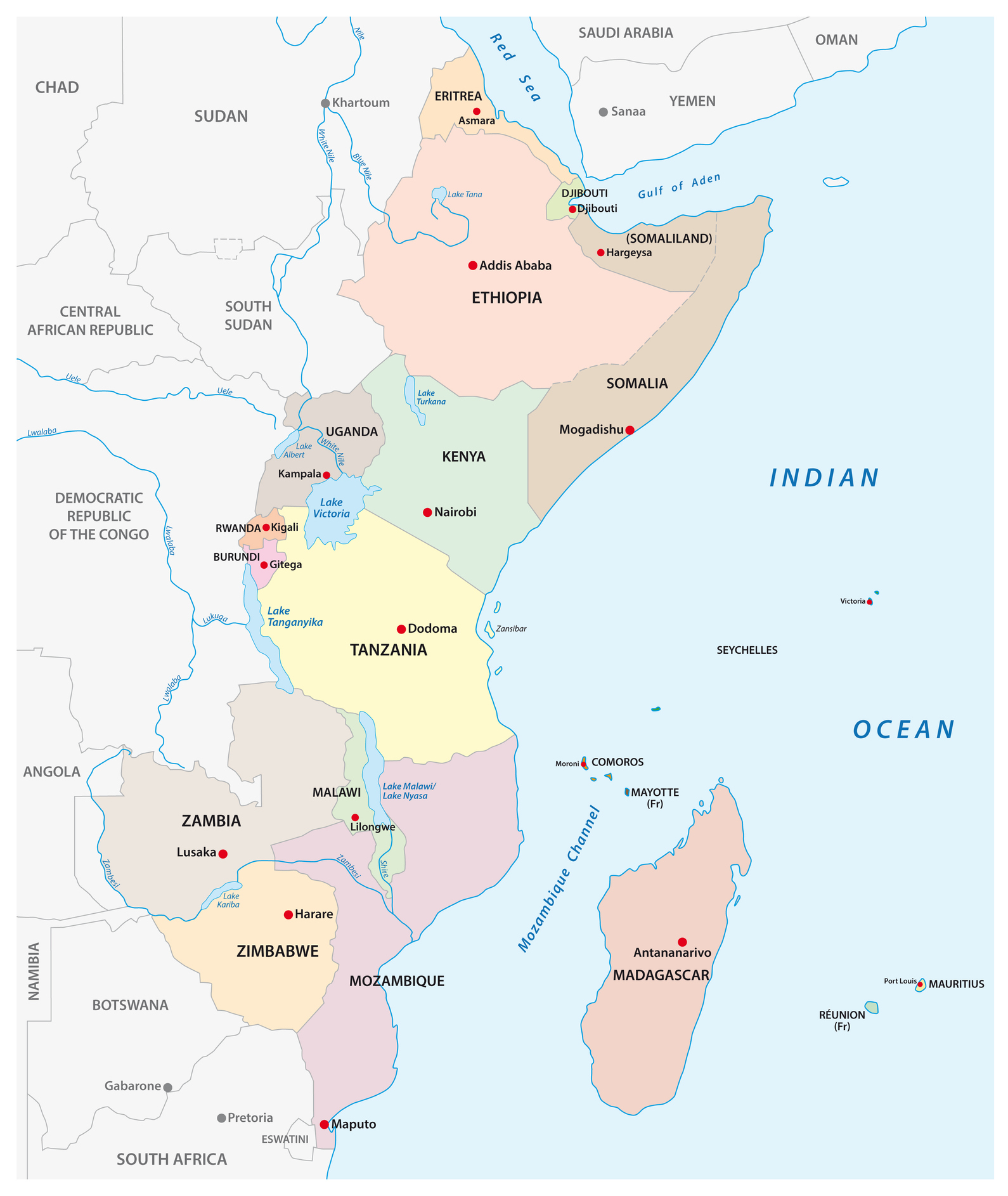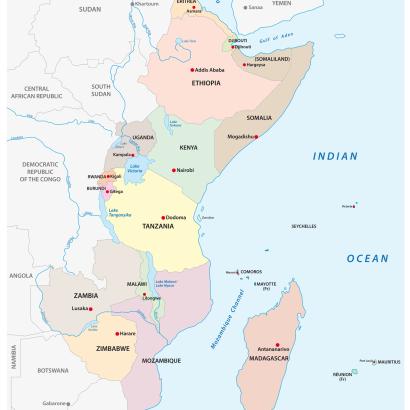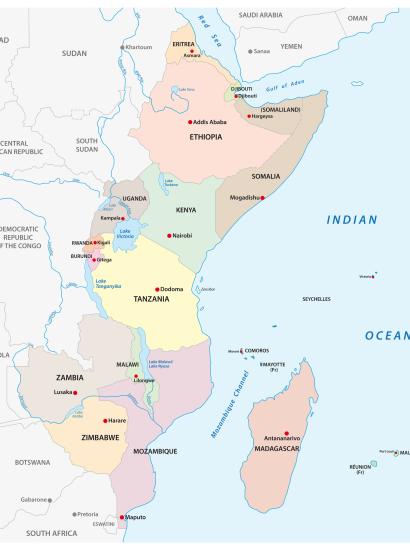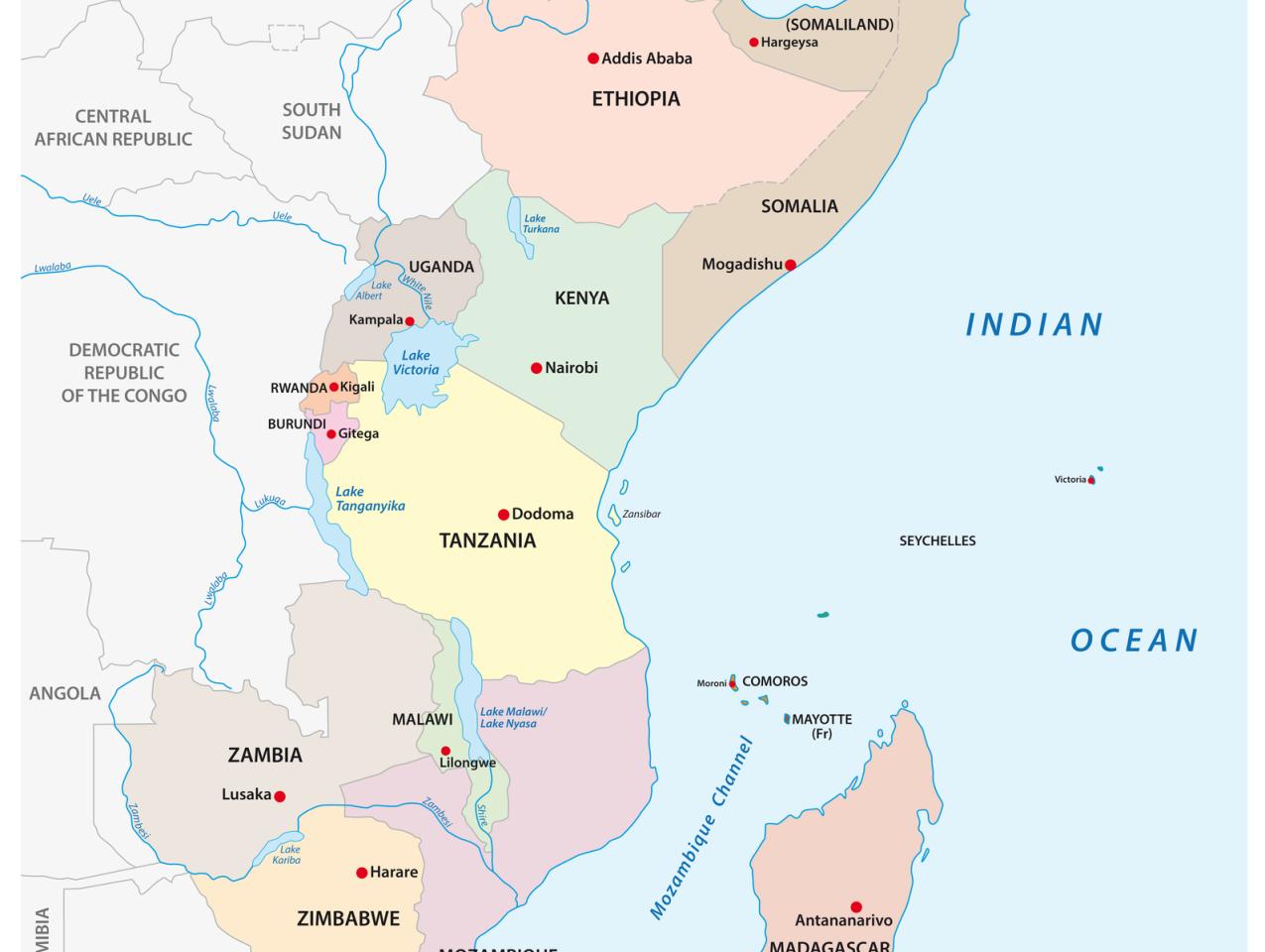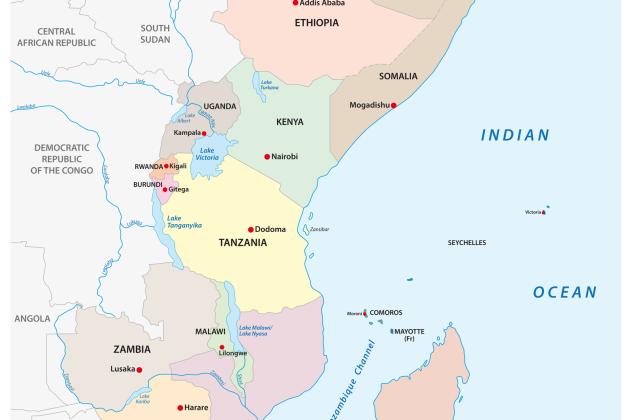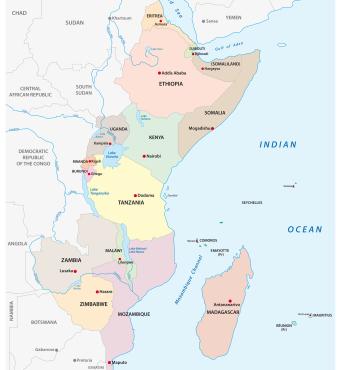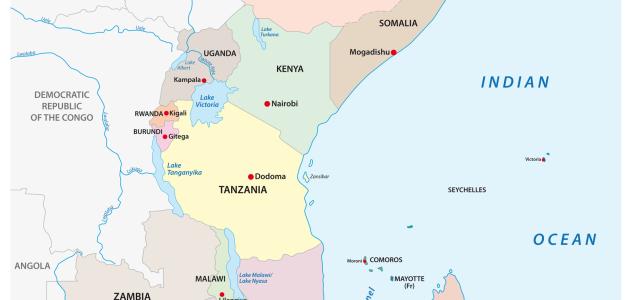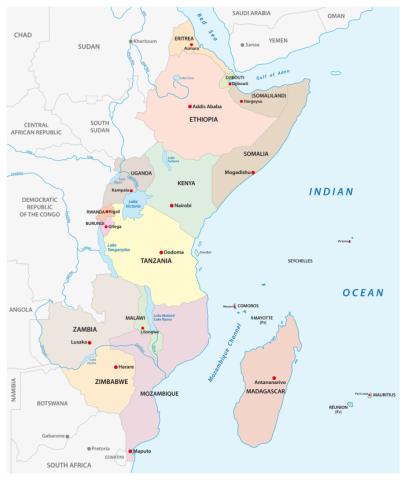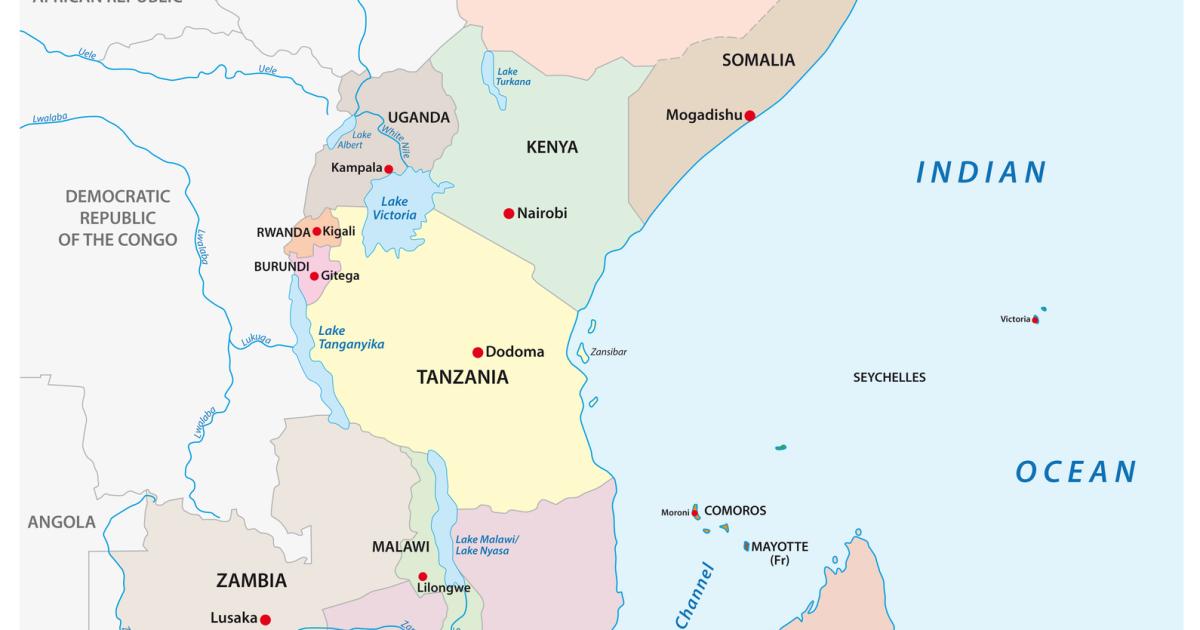- Middle East
The Islamic State’s Central Africa Province (ISCAP), born out of a local insurgent group known as the Allied Democratic Forces (ADF), is the deadliest group in Congo’s fractious east. Responsible for over 4,000 deaths since joining the Islamic State at the end of 2017, ISCAP is now the target of a joint Ugandan-Congolese operation (dubbed Operation Shujaa) that has registered some success in the previous six months. Nevertheless, the group is sustained by – and appears to be integral to – the Islamic State’s networks from the Horn of Africa down to South Africa and retains the desire and ability to perpetrate massacres and to launch urban attacks domestically and abroad. As such, local and international policymakers, analysts, and relevant stakeholders must take decisive action against ISCAP before the threat spreads any further.
A Brief History of ISCAP
In its previous iteration as the ADF, ISCAP has a long and violent history dating back to the mid-1990s and largely existed as a relatively little understood Ugandan rebel group based inside eastern Congo. Though always maintaining a stated militant Islamist agenda, it became increasingly more radical over time. Its turning point came in 2015 when its long-time leader and primary fundraiser, Jamil Mukulu, was arrested in Tanzania. Following the loss of Mukulu, a more-radical qadi [Islamic judge] and deputy within the group, Musa Baluku, took control.
By 2017, the group’s funds were rapidly disappearing, and morale was failing. In an effort to arrest the decline, Baluku looked abroad to secure both the group's funding and its future. He decided to pledge bay’ah [allegiance] to Abu Bakr al-Baghdadi and his proclaimed global caliphate. In November 2017, the ADF received its first confirmed financial transfer from the Islamic State via a Kenyan-based financier. Two years later, the Islamic State officially announced the creation of ISCAP, one of the newest of its so-called provinces. Baluku has since disavowed the ADF moniker in favor of ISCAP,[1] re-pledged the group’s allegiance to each of the Islamic State’s new caliphs, and the group’s rank-and-file have wholeheartedly adopted the Islamic State identity and openly kill in its name. In return, the Islamic State has provided funds, notoriety, and, reportedly, training to help its Central Africa Province reach new levels of violence.
ISCAP Evolves as Violence Mounts
When the ADF pledged allegiance to the Islamic State in 2017, it was responsible for the death of only a single civilian in the previous eight months.[2] With the influx of cash, and the fighting force that cash could sustain, ISCAP violence rose steadily, reaching a peak of 116 civilians killed on average each month in the first eight months of 2022.[3] Although civilian deaths have largely fallen since September – at least partly due to successes from the aforementioned Operation Shujaa – ISCAP has retained its ability to commit urban attacks and large-scale massacres. On January 15, 2023, ISCAP carried out its most successful bombing yet, killing 14 and wounding 76 in a church in Kasindi, a border town in eastern Congo. Two months later, the group went on a murderous spree, massacring over 100 people in a week, likely in retaliation for the killing of one of its senior commanders. The commander’s death is still to be confirmed. Numerous other plots have been discovered and prevented in the past six months, including a cross-border attack into western Uganda and an attempted suicide bombing of Ugandan government convoys.
In addition to the mounting death toll, the ADF has evolved in several significant ways as it has grown into the Islamic State’s Central Africa Province. In March 2021, ISCAP ideologues began to sensitize its members internally to suicide attacks, a tactic it had never before used.[4] After laying the supposed ideological foundation and touting the method’s popularity among top international jihadist leaders such as Abu Bakr al-Baghdadi and Osama bin Laden, ISCAP went on to perpetrate its first suicide bombing in June 2021 in Beni town, DRC. Since then, it has successfully used the tactic at least six more times, including the triple suicide bombing on November 16, 2021, in Kampala, Uganda, and an attack on a military bar in Goma, DRC in April 2022. Additional suicide bombings have been thwarted, as mentioned above. And though not a suicide bombing plot, additional bombings were thwarted in Rwanda in the summer of 2021. ISCAP’s conventional improvised explosive devices have also become more sophisticated in the past few years, including gaining the ability for remote detonation. These advances follow rumors of foreign trainers, reportedly sent by the Islamic State, visiting the camps. Occurring simultaneously with the adoption of suicide bombings was the incorporation of Islamic State-style beheading videos into the ADF’s propaganda and the adoption of a standardized dress of black kanzus to fit more in-line with traditional Islamic State imagery.
Becoming a Regional Threat
While the attacks mentioned above were significant for their methods, they were also important for their locations. During the ADF’s two decades in eastern Congo prior to joining the Islamic State, the group’s area of operations was mostly confined to part of Beni territory in northern North Kivu province. The jihadi group mounted limited cross-border raids into Uganda, though the Ugandan military largely put a stop to those by the mid-to-late 2000s. While the group was accused of targeted killings in Uganda between 2012 and 2015, its attempted suicide bombing in Pader, Uganda, in August 2021, was ISCAP’s first confirmed operation outside DRC since 2007. The attempted bombings in Rwanda in summer 2021, the Kampala bombings that November, and the Goma bombing in April 2022 demonstrated in quick succession that ISCAP had not only gained the ability to carry our urban attacks far from its traditional area of operations but that it was motivated to expand its reach to become a regional terror threat.
This expansion has been financed in large part by the Islamic State as ISCAP has been incorporated into the former’s regional networks.[5] These networks, overseen by the Islamic State’s Al-Karrar regional office in Somalia, have funneled money to the group’s coffers and hundreds of recruits from Tanzania, Kenya, Somalia, Rwanda, Burundi and elsewhere to its camps in Congo. Whereas before the ADF had recruited primarily in Uganda through personal relationships, aspiring Islamic State members can now look to Congo as a location to join an official “province” of the global organization. In addition to significantly bolstering the ADF’s own manpower, these recruits have at times returned to their countries of origin, establishing cells intended to facilitate further recruitment and even launch their own attacks.[6] The ADF’s integration into the Islamic State has thus positioned the group to become the regional hub for training, indoctrination, and combat experience, which can then be exported to Congo’s neighbors across Central and East Africa.
Conclusion
The ADF’s transformation into the Islamic State’s Central Africa Province has created several worrying threats to Central and East Africa. First, its killings of civilians have skyrocketed since joining the Islamic State (notwithstanding the recent relative drop in violence thanks in part to Operation Shujaa). Second, it has implemented suicide bombings and beheading videos into its repertoire of terror, meant to shock, frighten, and disturb civilians and governments alike as an official Islamic State group. And third, joining the Islamic State has unlocked previously inaccessible doors for the ADF, including a wider, more ideological recruitment pool, finances, and expansion outside of Congo’s borders.
Understanding this dire transformation, there are several things local and international stakeholders can do to help stymie the rise of ISCAP. Given the presence of ISCAP as an armed group in Congo and as a node in regional terror networks, assistance should focus on both Operation Shujaa’s efforts in Congo as well as broader efforts to disrupt the regional networks that have fueled ISCAP’s expansion. This could take the form of providing tactically relevant intelligence on ISCAP otherwise unavailable to the Congolese and Ugandan militaries, as well as helping establish cross-border intelligence coordination cells between the relevant agencies of all affected countries. Such regional cooperation should prioritize following and shutting down ISCAP’s financial flows, as well as disrupting recruitment cells. On the ground, local and international policymakers can help provide economic development for those communities affected – especially among those communities from which ISCAP recruits. At the same time, providing support for those who surrender, particularly to those who were tricked or forced into ISCAP, is vital to depleting its ranks.
Caleb Weiss is a senior analyst at Bridgeway Foundation and co-editor of FDD’s Long War Journal. Tara Candland is the Vice President of Research and Analysis at Bridgeway Foundation. Ryan O’Farrell is a senior analyst at Bridgeway and co-author of The Islamic State in Africa: The Emergence, Evolution, and Future of the Next Jihadist Battlefront. And Laren Poole is Bridgeway’s Chief Operations Officer.
[1] Internal ISCAP propaganda, October 2020.
[2] Based on authors’ analysis of data from the Kivu Security Tracker (KST).
[3] Ibid.
[4] Internal ISCAP propaganda, March 2021.
[5] Authors’ interviews with former Ugandan, Kenyan, Congolese, and Rwandan ISCAP members, March 2020 to March 2023.
[6] Ibid.







